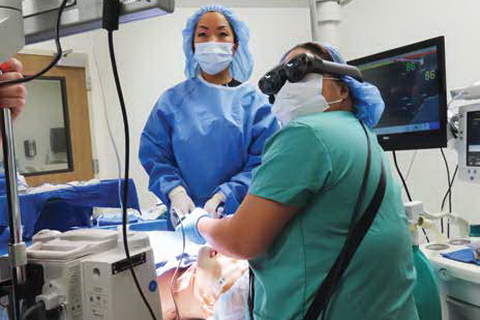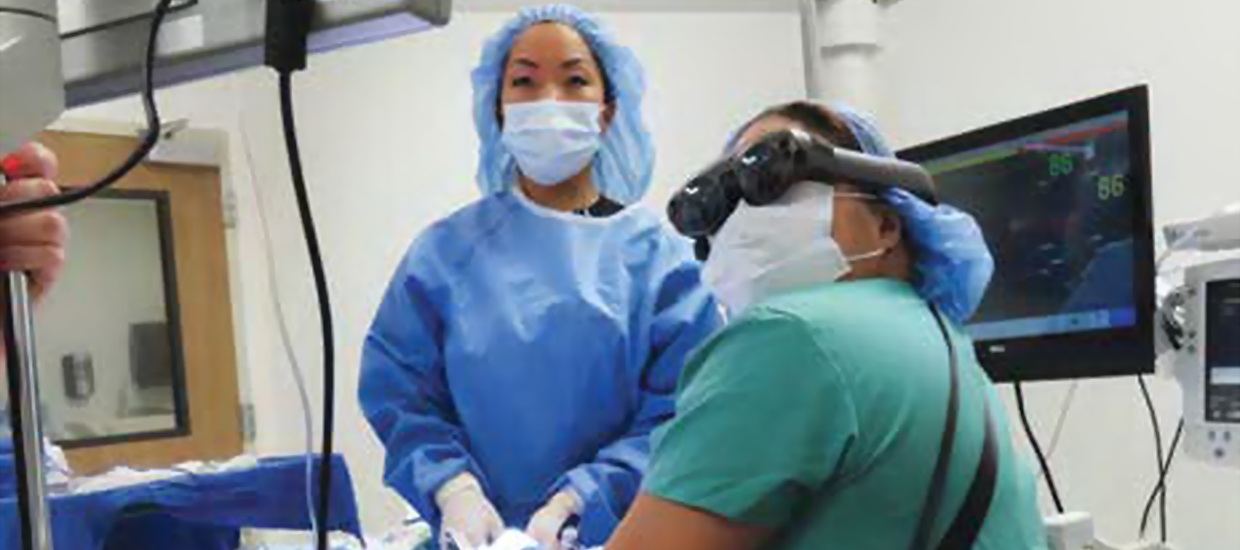The Health Resources and Services Administration (HRSA) of the U.S. Department of Health and Human Services (HHS) has awarded the School of Nursing and Health Studies a competitive grant renewal, funding its Nurse Anesthetist Traineeship project (NAT) for three additional years.
NAT provides financial support and mentorship to nurse anesthesia students who express a commitment to work after graduation in areas with medically underserved populations and/or a shortage of health professionals. This year’s HRSA funding will enable the school to provide NAT aid to over 60 percent of students currently in its 36-month B.S.N.-D.N.P. (Doctor of Nursing Practice) Nurse Anesthesia Track program.
Along with a three-year extension of the award, which began in 2019 with $16,649, comes a significant financial boost—$62,653 for the 2020 budget year, with recommendations of $47,446 and $43,902 for fiscal years 2021 and 2022, respectively—for a four-year total of $170,650.
The grant’s positive renewal terms demonstrate both the success and relevance of the project, led by Juan E. Gonzalez, professor of clinical at SONHS. “This training grant from the U.S. Department of Health and Human Services will contribute to a better understanding of the role that health care disparities play in the health of the population,” he explains. “The program orients traineeship recipients to identify possible barriers to the health care their patients may encounter and fosters a sense of commitment.”
The award also supports the federal government’s priority to combat the opioid abuse epidemic with an emphasis in rural, underserved populations, where most anesthesia services are provided by certified registered nurse anesthetists. “In addition to opioid management,” notes Gonzalez, “we teach all of our students opioid-sparing techniques in anesthesia, which could be an emphasis on regional anesthesia without narcotics whenever possible, as well as a more holistic approach to pain management and other non-opioid approaches.”
According to Gonzalez, last year over 75 percent of SONHS doctoral nurse anesthesia graduates were practicing in settings considered medically underserved and/or facing a shortage of health professionals after graduation. “Through our clinical site placements, program grads of all backgrounds become even more aware of the need and the importance of taking care of underserved demographics. As they become more aware of this reality, it makes sense that they choose to serve where the need is greatest," says Gonzalez.
This project is supported by the Health Resources and Services Administration (HRSA) of the U.S. Department of Health and Human Services (HHS) as part of an award totaling $79,302 with 0 percentage financed with non¬governmental sources. The contents are those of the author(s) and do not necessarily represent the official views of, nor an endorsement, by HRSA, HHS or the U.S. Government.





